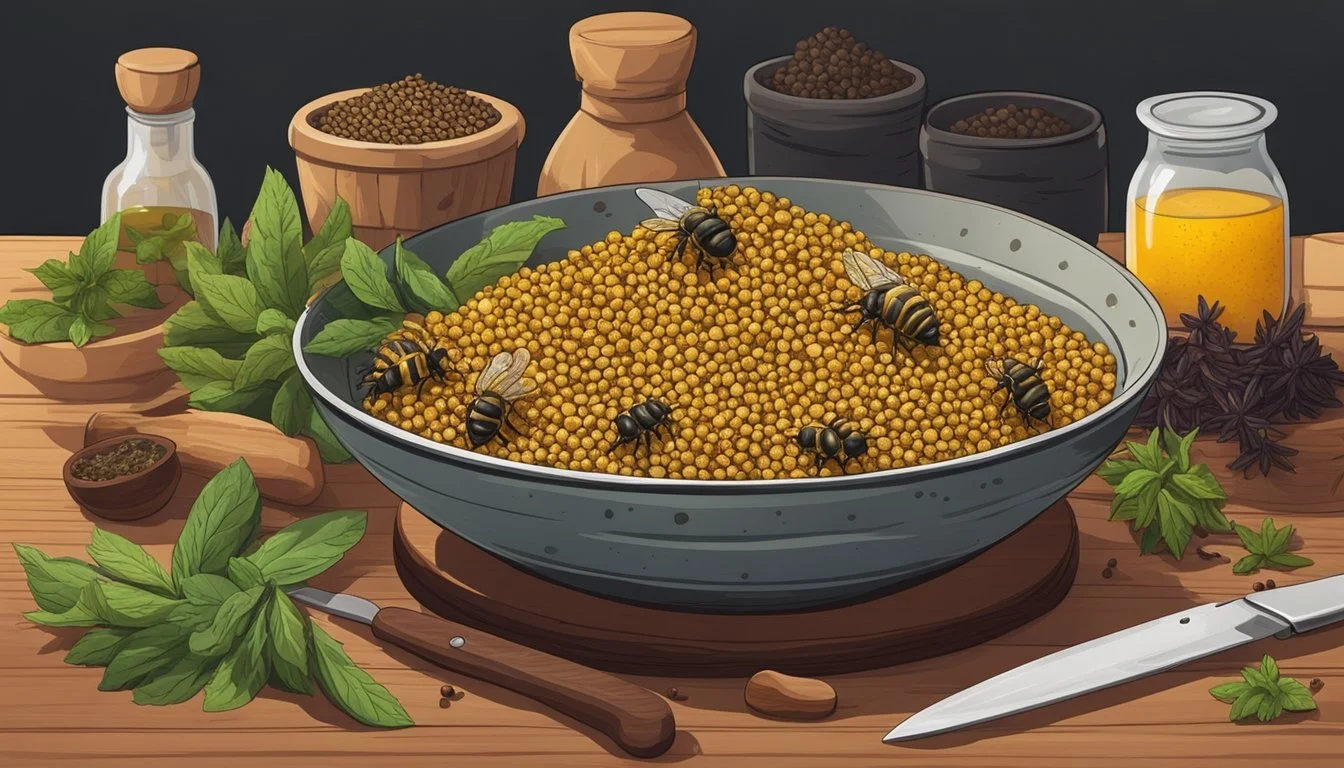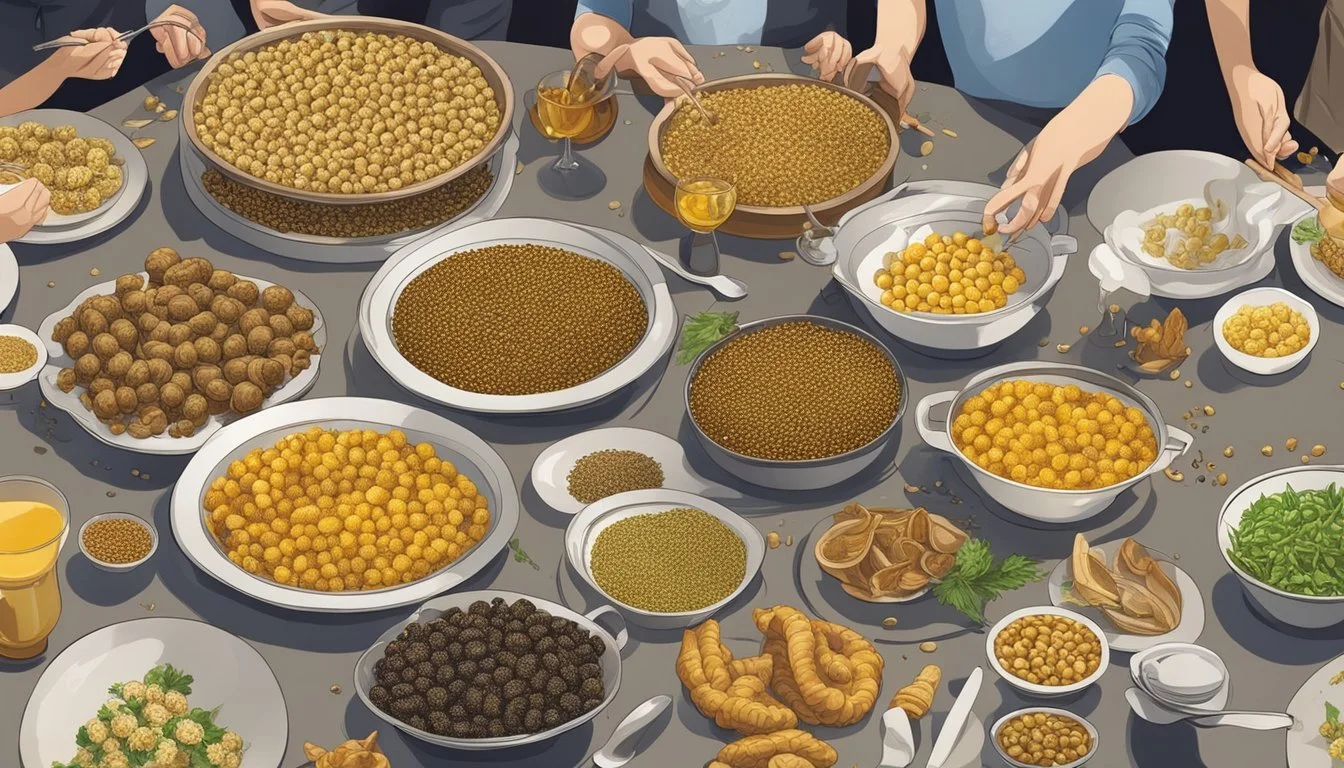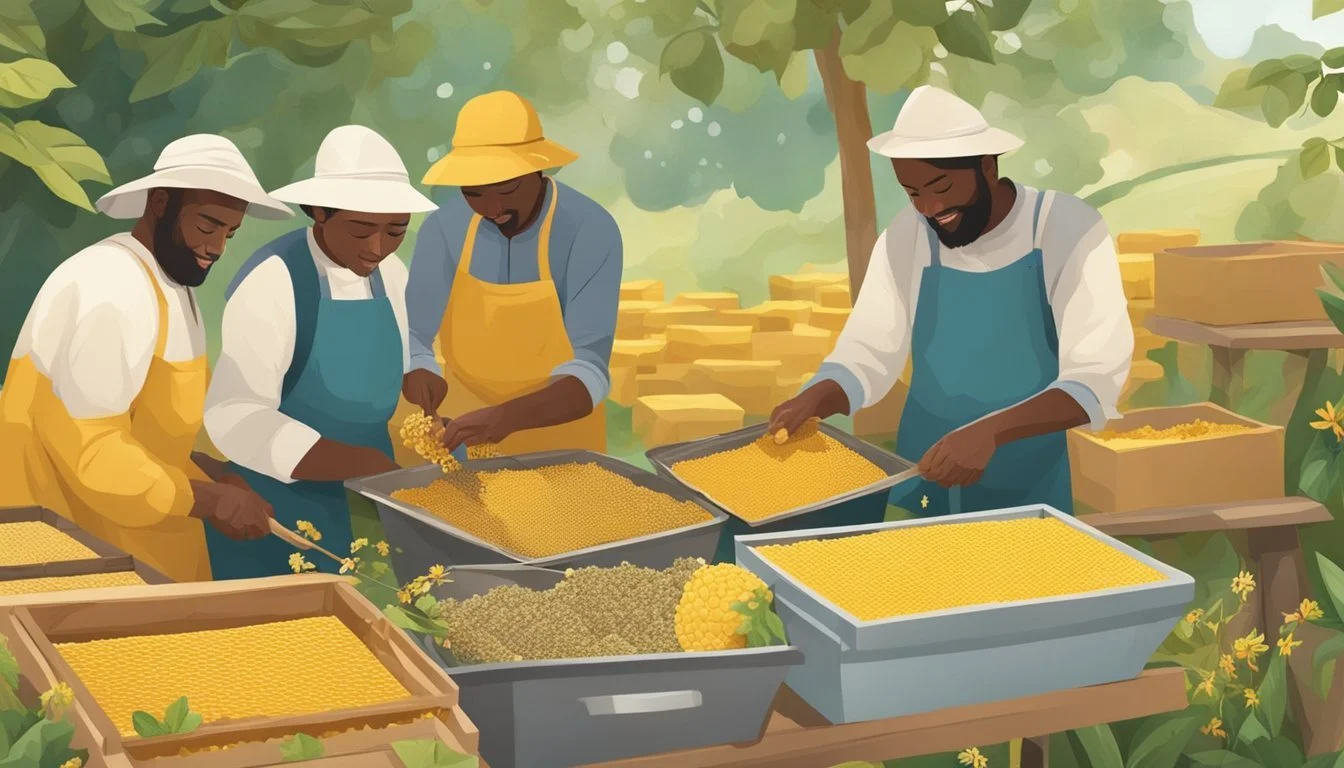Bee Larvae Delicacies Global Culinary Practices Explored
Bee larvae are emerging as a surprising yet nutrient-rich food option embraced by an array of cultures around the globe. Considered a delicacy in countries such as Mexico, Thailand, and Australia, these immature forms of bees are sought after for their flavor and potential health benefits. Typically the larvae and pupae of drones, bee brood, as it is commonly known, is rich in protein, providing a sustainable dietary option that aligns with growing interest in alternative protein sources.
Eating insects, a practice known as entomophagy, is not new; approximately 2,000 insect species are consumed in at least 113 countries. Bee larvae, with their mild, nutty taste and crunchy texture upon drying, are consumed in various forms, from raw and fresh out of the comb to cooked or processed as an ingredient in more complex dishes. In addition to protein, they are packed with nutrients and seen as a viable option to complement or replace traditional meat products in our diets.
The practice of consuming bee larvae reflects a broader acceptance and interest in insects as food, driven by environmental and health considerations. Livestock farming's substantial environmental impact calls for alternative food sources. In this context, honey bees' widespread presence and the established relationship between bees and humans could play a pivotal role in the wider adoption of bees and other insects as sustainable dietary staples.
The Fascinating World of Bees
Discover the intricate biology and social structures of bees as we delve into the biology, life cycle, and colony roles of these essential insects. Each stage of their existence serves a crucial purpose, from larvae to adult, ensuring the survival of the colony and benefits to our ecosystem.
Understanding Bee Biology
Bees, members of the insect order Hymenoptera, are well-known for their role in pollination and honey production. The species Apis mellifera, or the Western honeybee, is one of the most studied and vital for human agriculture. Bee's bodies are divided into three parts: the head, thorax, and abdomen. They possess six legs, two pairs of wings, and compound eyes. Their biology is highlighted by unique features such as a barbed stinger in worker bees and females, and specialized structures like pollen baskets.
The diet of bees is composed of two primary substances: nectar and bee bread. Nectar provides them with carbohydrates, while bee bread—made from pollen and fermented by the bees—provides proteins, fats, vitamins, and minerals, including vitamin B and iron, essential for their growth and development.
Examination of the Bee Life Cycle
Egg: The queen bee lays fertilized and unfertilized eggs.
Larvae: After hatching, workers feed the larvae with royal jelly first, then with bee bread.
Pupa: Larvae develop into pupae where they undergo metamorphosis.
Adult: Emergence of a fully formed bee, differentiated into drones, workers, or a new queen.
The life cycle begins with the queen bee laying eggs within the hive's cells. Fertilized eggs will become either worker bees or future queens, while unfertilized eggs develop into male bees, known as drones. The larvae stage follows, during which they are provided with royal jelly, a protein-rich secretion that is essential for the development of the queen. The subsequent pupa stage is where the most transformation occurs, with the development of wings, legs, and eyes, within a protective casing. This developmental process is regulated by the temperature maintained inside the colony.
Roles Within the Bee Colony
Stability within the bee colony is maintained through a division of labor based on age and the needs of the colony. The roles include:
Queen Bee: The heart of the hive, she is responsible for laying eggs and producing pheromones that unify the colony.
Worker Bees: Female bees performing various tasks, from nursing larvae to foraging for nectar and pollen.
Drones: Male bees, whose sole role is to mate with a queen.
Each colony has a single queen, whose ability to lay eggs ensures the continuation of the hive. The worker bees undertake numerous duties necessary for the survival and health of the colony, including feeding the larvae, cleaning and building the hive, and foraging for food. They are at the forefront of defence against pests like the varroa mite, a significant threat to bee populations. Drones live for the sole purpose of mating with a virgin queen and die shortly after this single act.
The bee colony operates as a superorganism, with each bee's actions contributing to the hive's overall well-being and success. The interdependence between roles is essential for the life cycle of the bee and, consequently, the health of our ecosystems.
Bee Larvae as a Nutritional Powerhouse
Bee larvae have recently gained attention as a compact source of nutrition, boasting a significant protein content, a diverse profile of vitamins and minerals, and a wide array of health benefits.
Protein Content and Nutritional Profile
Bee larvae offer a substantial amount of protein, comparable to traditional meats like beef. This source of protein is complemented by a favorable balance of essential fatty acids, which are crucial for maintaining good health. The nutritional value of bee larvae is enhanced by their low levels of fats, making them a lean source of nutrients.
Vitamins and Minerals In Larvae
In addition to protein and fatty acids, bee larvae are a good source of various vitamins and minerals. They are particularly high in B-vitamins, which are vital for energy metabolism and nervous system health. The larvae also contain important minerals such as iron and zinc, which are critical for immune function and overall bodily health.
Health Benefits of Consuming Bee Larvae
Eating bee larvae can impart several health benefits. Due to their high nutritional content, they can help in boosting the immune system and promoting healthy growth. The presence of beneficial fatty acids contributes to cardiovascular health, and the low fat content may make bee larvae a heart-friendly alternative to other protein sources.
Culinary Practices and Preferences
Bee larvae have emerged as a novel delicacy in various cultures, prized for their unique flavor and high nutritional value. They are incorporated into traditional dishes, modern culinary innovations, and hold cultural significance around the world.
Traditional Dishes Featuring Bee Larvae
Traditionally, bee larvae are consumed in a variety of regional dishes. In Mexico, they are savored for their nutty flavor and crunchy texture, often featured in tacos with a squeeze of lime to enhance their taste. In Thailand, bee brood is a customary food source added to soups where it imparts a rich, complex flavor. Among these traditional preparations, honey is sometimes used as a complementary ingredient to accentuate the natural sweetness of the bee larvae.
Innovative Recipes and Modern Cuisine
Chefs in contemporary kitchens are exploring innovative ways to introduce bee larvae into modern cuisine. They experiment with various cooking methods, such as sautéing larvae in golden mountain sauce or incorporating them into egg dishes. White wine sauce is another complementary addition that brings out the subtle flavors of the larvae in more sophisticated recipes, aiming to cater to a broader audience by adapting the ingredient to familiar tastes.
Global Variations and Cultural Significance
Around the world, bee larvae are celebrated for their cultural significance and dietary importance. In Australia, they are relished as a high-protein food source and are sometimes found in fine dining restaurants. The practice of eating bee brood varies significantly across different cultures, where the larvae are either a sought-after delicacy or a novel ingredient just entering the culinary scene. The ingredient's significance is deeply rooted in the lifestyle and traditions of the people who include it in their diet, often symbolizing a connection to nature and sustainable food practices.
Regional Spotlight on Eating Insects
Eating insects is a practice embraced in various regions around the world, each with its own unique delicacies ranging from ant eggs to bee larvae.
Mexico: From Ant Eggs to Bee Larvae
In Mexico, particularly in regions such as Oaxaca, the consumption of insects is part of a longstanding culinary tradition. Ant eggs, known locally as escamoles, are highly prized and often dubbed "insect caviar." They are typically sautéed in butter and spices and treasured for their rich texture. Moving to another insect-based delicacy, bee larvae are harvested from hives and have a sweet, nutty flavor. Street vendors and local markets commonly offer these as snacks, sometimes seasoned and toasted.
Thailand's Exotic Flavors: Jing Leed to Bee Brood
Thailand's street food culture features an array of insects as a staple. The assortment includes grasshoppers, crickets known as Jing Leed, and a variety of bee larvae and broods. These insects are often fried, seasoned with local spices, and enjoyed for their distinct, savory crunch. Bee larvae are relished in Thailand just as in other parts of Asia, including most notably in China, where they stand as a testament to the region's rich entomophagic practices.
Africa's Diverse Insect Diet: The Role of Bee Larvae
Africa showcases a tremendous variety in its insect diet with specific countries like Kenya integrating insects into their food culture. Bee larvae hold a place in this dietary diversity, with their consumption linked to traditional harvesting practices. They are either eaten raw, included in dishes, or sun-dried for later use. Beyond bee larvae, Africa is also home to a wide range of edible insects, from protein-rich caterpillars to termites, which can be found in local markets and are often fried for consumption.
Cultural Attitudes Towards Bee Larvae
Bee larvae are regarded as a unique delicacy, reflecting diverse societal attitudes and environmental considerations.
Perceptions and Taboos
In various cultures, bee larvae are esteemed for their flavor and nutritive value. They’re often perceived as a luxury food item, similar to caviar in Western societies. Historically, Roman practices included the fattening of beetle larvae, highlighting a conventional appreciation for larvae-based dishes. However, taboos exist as well, with some societies experiencing aversion or repulsion towards consuming insect larvae, influenced by dietary customs and religious beliefs. This dichotomy in perception influences food choices, with bee larvae either integrated into the diet or rejected.
Sustainability and Environmental Impact
Beekeepers play a crucial role in the breeding and maintenance of healthy bee populations, which includes the responsible harvesting of bee larvae. The practice serves not just as a source of food but also as a facet of environmental sustainability. Insects, including bee larvae, require fewer resources and produce less greenhouse gases per mass of protein than traditional livestock, thus providing a low-impact alternative to conventional meats in our diet. Society's growing environmental consciousness has led to an increased interest in bee larvae as a sustainable food choice, coinciding with the global shift towards more ecologically responsible diets.
Harvesting and Preparation Techniques
Harvesting bee larvae requires a delicate touch and a clear understanding of bee behavior and hive dynamics. Once collected, the larvae can be transformed into a unique culinary experience, prepared with methods honed through generations.
Beekeeping Practices for Larvae Harvesting
Beekeepers must monitor bee larvae during the pivotal stages of their development, which involves the process of metamorphosis. Those who wish to harvest larvae typically look for the brood cells that are not yet capped, which indicates larvae in their early stage of growth.
Inspection: Carefully inspect frames to identify cells with bee larvae.
Selection: Choose larvae before they begin the molting process.
Extraction: Utilize special tools delicately to avoid harm to both larvae and hive.
The storage of the harvested larvae must then be handled with care, ensuring they are kept at appropriate temperatures to maintain freshness until ready for consumption or further processing.
Methods of Preparing Bee Larvae for Consumption
Preparing bee larvae as a food source is a practice found in various cultures around the world, each with their own methods and recipes.
Cleaning: Gently rinse larvae to remove any traces of honey or wax.
Cooking: Options include boiling, sautéing, or frying, often utilizing flavors that complement the larvae's creamy texture.
Royal jelly, a nutritious secretion used to feed the queen and young larvae, might be preserved during harvesting and incorporated into recipes to enrich both taste and nutritional value.
By employing these techniques, beekeepers and chefs can create dishes that showcase bee larvae, turning this insect delicacy into a sustainable and flavorful addition to the global palette.
Confronting Challenges
Bee larvae, a potential alternative to traditional meats such as beef, are not without their difficulties. Issues of health risks and the requirement for sustainable bee cultivation are at the forefront when considering this insect delicacy.
Health Risks and Allergens
While bee larvae offer substantial nutritional benefits, health risks and potential allergens to humans need careful consideration. They can harbor parasites, such as the Varroa mite, which not only affects bee colonies but could pose risks if not properly managed in larvae meant for consumption. Regulations must ensure these insect products are safely produced, processed, and labeled to minimize allergic reactions and health implications for consumers.
Conservation and Bee Population Sustainability
The sustainability of bee populations is central to the conversation on bee larvae as food. Conservation efforts are paramount, as intensive harvesting of bee larvae could threaten bee colony viability. It's necessary to balance the harvesting with the bee lifecycle, ensuring that adult bees are not excessively impacted, which can disrupt pollination services and agricultural productivity. Legislation may need to focus on enforcing sustainable practices to mitigate the impact on both wild and domesticated bee populations, preserving this resource for future generations.









